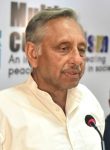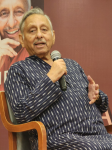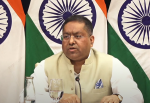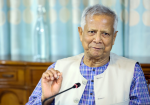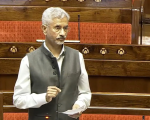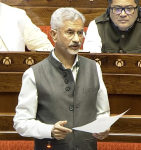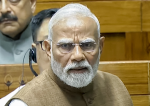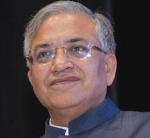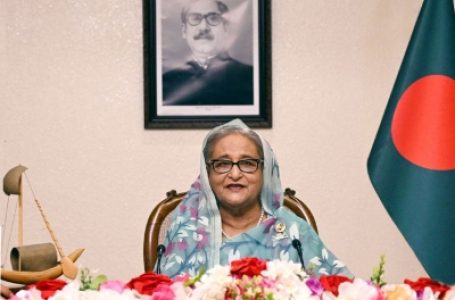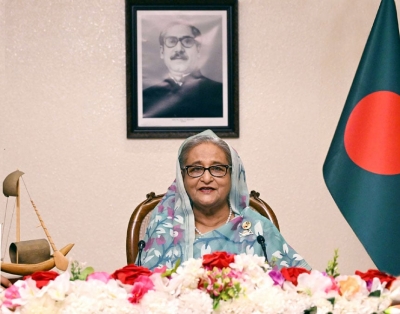
New Delhi: One year is hardly long enough to define a nation’s history. However, in the past one year since nationwide protests compelled former Prime Minister Sheikh Hasina to flee the country, Bangladesh has been riven to a point where it is difficult to recognise not only what the country has become, but to even wonder why it ever came into being and separated from Pakistan 54 years ago.
The basic assumption behind the inception and birth of Bangladesh, beginning in 1952, less than five years after the partition of the subcontinent of India into the countries India and Pakistan, was language and, by extension, its unique Bengali cultural identity. Islam was, and certainly is, an inherent part of that identity, but the defining feature of the identity that the people sought was cultural, defined by the language they spoke.
The people of erstwhile East Pakistan chose Bengali and not Urdu as their language, their essential identity. The United Nations opted to honour the struggle for linguistic identity of the people of what is now Bangladesh by designating February 21 (when, in 1952, people were killed in Dhaka for protesting against the imposition of Urdu) as International Mother Language Day.
That is why, since the widespread agitation to remove Sheikh Hasina gathered momentum in 2024, leading to her physical removal from office on August 5, 2024, it remains unclear why icons associated with the Bengali language have been razed.
Many focal points of popular anger immediately after Sheik Hasina fled were related to India; Hindu temples, the Indian cultural centre and busts of Rabindranath Tagore; that was understandable, because India became identified with the enemy which had not only helped Hasina perpetuate her rule, but also the country where she had sought and received shelter.
As the Bangladesh International Crimes Tribunal frames charges against Hasina and seeks to punish her with death for her crime of killing hundreds of those, including students, who protested against her regime, what remains inexplicable was the razing of the home and statues of Sheikh Mujibur Rahman, the man whose role was both central and crucial to the idea and creation of Bangladesh. His picture has been removed from Bangladeshi currency, to ensure that people are not reminded of the man on a daily basis.
That his daughter is Hasina cannot, however, detract from or deny the seminal role that Rehman played in the emergence of Bangladesh as a sovereign country. Efforts to portray Maj Gen Ziaur Rehman, the late husband of the current Bangladesh Nationalist Party (BNP) head Khaleda Zia, as the man who brought about the independence of Bangladesh are specious at best. The history of the birth of Bangladesh is too recent and too well documented to merit much manipulation.
However allegedly repressive Hasina’s rule may have been, it remains a fact that she ensured that the country emerged from the depths of poverty and became a viable economic entity, in which the participation of women and vital social indicators like maternal and infant mortality reached impressive levels. The global Covid pandemic hit the Bangladesh economy, like most other global emerging economies, very hard, leading to unemployment and economic problems. Hasina’s harsh handling of the popular protests as economic problems compounded made her unpopular. Further repression instead of sensitive handling of the crisis spiralled to a point where she could not remain.
Equally undeniable, despite the barrage of criticism that has come in India’s direction since Hasina fled Dhaka, is the fact that India was instrumental in providing the necessary support and sustenance, including with the lives of its many soldiers, for the creation of Bangladesh.
Which is why, the recent attacks on the ancestral homes of Tagore and Satyajit Ray, who are Indian but are also both global icons of Bengali culture, indicate considerable confusion in the thinking that is guiding Bangladesh policy since Hasina fled Dhaka. Has Islam and the Islamic identity subsumed the Bengali identity and culture of Bangladesh?
When the Bangladesh interim administration, headed by Chief Advisor Mohammed Yunus, attempted to woo Pakistan back into the country, with trade and strategic linkages, it appeared that was the intent. The effort to keep the Hindu-majoritarian government of India out appeared popular, but has provided no economic relief. Nobel Laureate Yunus’ caretaker government, while trying to navigate a very narrow path as it struggles to move forward and remain a democracy, has realised that it can’t afford to antagonise its biggest neighbour.
After months of antagonism aimed against India as he struggled to restore law and order and contend with challenges of a stagnant economy, Yunus appointed Riaz Hamidullah as High Commissioner to India, restoring top level diplomatic relations. Recently, taking a leaf from the deposed Premier Hasina’s book, Yunus embarked upon what could be dubbed “mango diplomacy” to offer a hand of friendship by sending the famed ‘Haribhanga’ mangoes to the Indian leadership, including Prime Minister Narendra Modi.
Elections are tentatively scheduled by mid-2026, Yunus has claimed. It is perhaps the only way to resolve myriad contending claimants to power. Civil society remains a very strong factor in Bangladesh, and is a potent force for preservation of democracy.
However, before elections can augur a stable result, the people of Bangladesh have to decide which identity they seek to espouse; for the Bengali one, linkages with India will, perforce, be necessary. If, however, the Islamic identity is what Bangladesh seeks to project for itself, the people will have to seriously wonder why they needed to separate from Islamic Pakistan.
INDIA NEWS STREAM



 by Nilova Roy Chaudhury
by Nilova Roy Chaudhury


